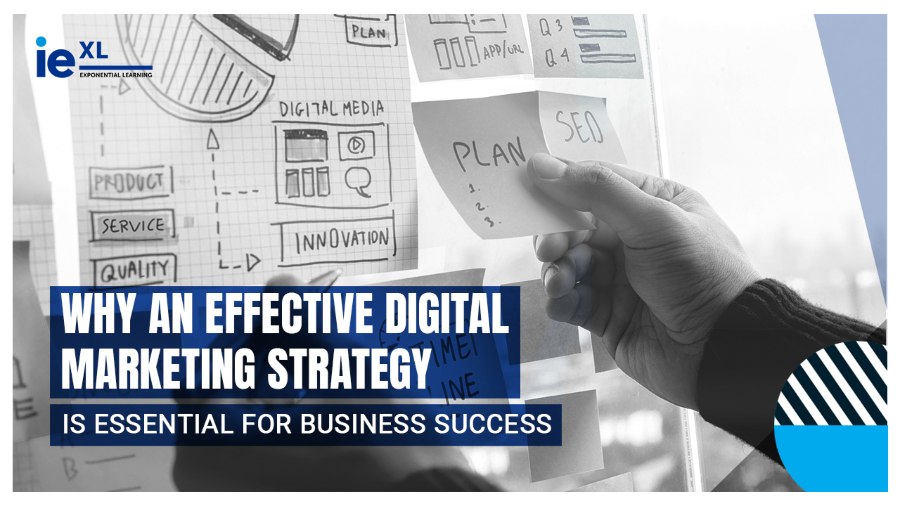Why do we need a customer journey anyway?

Today’s consumer is becoming more sophisticated, and with that, authenticity is becoming more of a requirement rather than something optional. When we’re looking to market, regardless of whether online or offline, it’s easier to have someone in mind. That’s why, marketers often rely on Buyer Personas, which are our starting-off point for any customer journey. So, what’s a buyer persona? According to HubSpot, “[a] buyer persona is a semi-fictional representation of your ideal customer based on market research and real data about your existing customers.”
Unlike other points of digital marketing that are not universally applied, we could say that the customer journey is more ubiquitous. Why you may ask? It’s because it works. A recent article in Forbes cited the results of a 2016 study that said companies using a customer journey saw a 54% greater marketing ROI than those that didn’t (those who didn’t saw a marketing ROI increase of just 16.2%).
A customer journey map is a story. That’s because the client journey map gets traced from the Buyer Persona’s point of view and the landscape is full of so many touch points that without a tool like this, could be tons of dots that appear impossible to connect. At the end of the day, according to Goran Paunovic, the author of this Forbes article, the question the customer journey mapping process seeks to answer: “[h]ow do we measure, improve and deliver the best possible customer experience while highlighting brand value and promoting conversion?” And the story of how a brand gets there can be traced through the client’s journey.
The customer’s journey also helps brands better place themselves when their prospective consumers are ready to act. Why you may ask? Paunovic nails it like this:
Customers interact with a brand because they connect emotionally and/or need a problem solved. Thriving companies drive this strategic growth by delivering experiences that meet these customer needs, generating relationships that leave customers wanting more.
If the connection isn’t there, consumers will skip your brand and look for another one. And that is what the client’s journey is seeking to prevent. That’s because it forces you to empathize, consider what the consumer has at the heart of his or her decision-making criteria, understand, and create a path to get that need satisfied.
The most interesting point of Paunovic’s article relates to how customer journey mapping helps with storytelling. We can use the tools throughout all the steps of journey mapping to trace the story we want the buyer persona to have with the brand, and subsequently lay the groundwork for those compelling stories that can ultimately lead to the coveted conversions that are a vital part of the sales funnel.
Paunovic claims that all the components going into the customer journey mapping process “…go beyond simply capturing and representing data in a visual format — they reveal a story about the customer’s subjective, personal experience.” We also concur with Paunovic’s parting words that a customer journey map is fundamental in just about every digital marketing strategy.
While the idea can seem pretty simple, the truth is that depending on the context, the customer journey can get complicated. Salesforce advises, that to get the most out of your customer journey map; you’ll want to map out all possible touchpoints. But, don’t fret if it seems too onerous. Doing it like this means that you’ll get the most out of your mapping, best anticipate and understand your customers’ pain points, and make the experience the consumer has with your brand as seamless as possible.
If you’re coming at marketing from a more quantitative perspective, you might be thinking that customer journeys are based in a more qualitative manner, it may be turning you off. Many customer journey maps include quantitative pieces of data, which you can get using your CRM (whether it be Salesforce, HubSpot, or any other provider your company happens to use) and other points of data. They could be coming from your call center or even from your website analytics. The customer journey, in this way, can seamlessly blend a compelling story with hard, numerical results that can work together to bring the qualitative improvements that translate into numeric results.
What does this mean to me?
We start out our deep dive into Digital Marketing with the six steps of the customer journey. Developing a customer journey map helps marketers realize how their decisions go throughout the entire organization. It also informs us as we set out objectives related to the channels we are going to use, and the overall marketing plan itself. It can apply to every dimension of the overall digital strategy, and what better way to keep it consistent?
Ready to join in on the action?
If you’re eager to know more about the Digital Marketing, Social Media and Analytics: An Omnichannel Strategy HiOP, check out our homepage and click here to get a copy of our informational brochure. And, if you’re already set on joining us, get started on your application.



